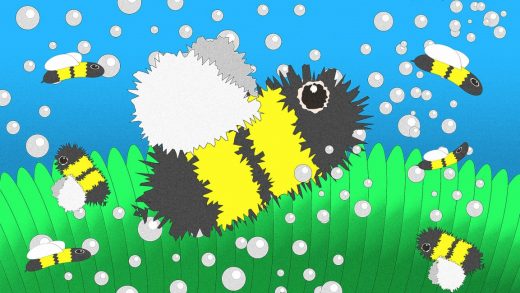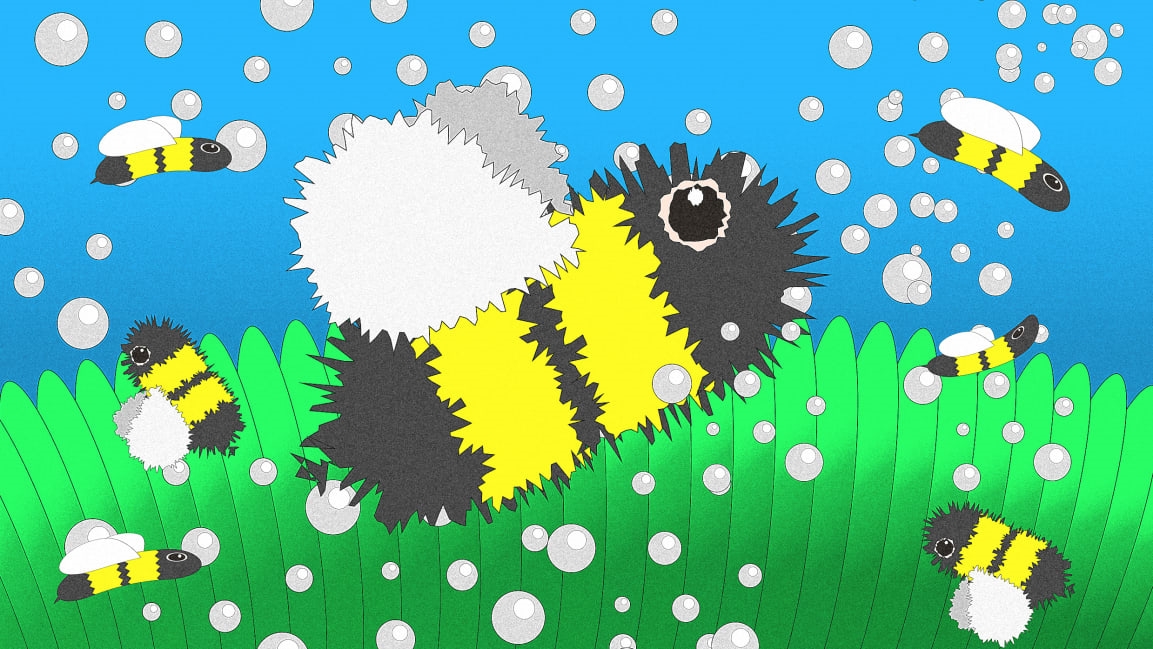Ingredients in Roundup not tested by the EPA could be killing bumblebees
The American bumblebee used to be one of the most commonly observed bees in the country. But over 20 years, the population has declined by an estimated 89%.
One of the challenges the bees face may be the growing use of Roundup, the wildly popular weedkiller that, until recently, wasn’t thought to be a major threat to bees. Glyphosate, the active ingredient in the herbicide and a registered pesticide, has been linked to cancer in humans, and banned in some countries. (The EPA maintains that it is “unlikely to be a human carcinogen.”) When the EPA tested the safety of glyphosate for insects by spraying it on honeybees, they found that it wasn’t a concern. But when a recent independent study tested Roundup products, scientists discovered that the other ingredients in the spray—none of which are tested by the EPA—were toxic to bumblebees.
“The way that the current pesticide law’s written, only the active ingredient is the one that’s looked into in-depth as far as its toxicity,” says Jess Tyler, an entomologist and staff scientist at the nonprofit Center for Biological Diversity. Other chemical additives used along with glyphosate, “co-formulants” designed to make glyphosate more effective, are considered “inert” and don’t get tested. If you buy a bottle of Roundup at Home Depot, the label won’t list these other ingredients.
In the recent study, published in the Journal of Applied Ecology, researchers at Royal Holloway University of London tested four common herbicides—Roundup Ready-To-Use, Roundup No Glyphosate, Roundup ProActive, and a competitor’s product, Weedol, which also uses glyphosate. They sprayed the products directly onto more than 50 bees of a bumblebee species common in Europe. Weedol didn’t produce significant mortality. The Roundup product made without glyphosate, on the other hand, killed 96% of the bees. Roundup Ready-To-Use killed 94%; the other Roundup product, commonly used in agriculture, killed 30%.
Bayer, which acquired Roundup manufacturer Monsanto in 2018, contested the study’s methodology, saying in a statement it was “inconsistent with product instructions and common sense about where to spray weed killers.” Roundup instructions, however, don’t warn users not to spray when bees are present. (The instructions for one of the tested products say that it “is of low toxicity to honeybees; there is no requirement to avoid application of the product when bees are foraging on flowering weeds in treated crops.”) “While it is common sense that you should avoid spraying any pesticide where bees are present, the information which accompanies Bayer’s products directly contradicts this,” says study lead author Edward Straw, a PhD candidate at Royal Holloway University of London. “Changing label restrictions to disallow spraying when bees are present would reflect the potential threat to pollinators herbicides pose.”
Bayer also took issue with the fact that the study did not include a control for soapy water, which could kill bees, since “weed killers typically contain a herbicide that kills the weeds, water, and a surfactant that acts like soap to spread the herbicide on weed leaves and reduce the amount of herbicide needed.” But if surfactants are dangerous to bees, and Roundup contains surfactants, it follows that Roundup is also dangerous to bees. The researchers did not test the specific surfactants in the formulas because those ingredients are a trade secret.
Bumblebees are facing other threats, too, like climate change along with loss of habitat. In the U.S., native bees face competition from non-native honeybees. Insecticides are yet another problem. “I don’t think there’s any coincidence that the rise in the class of insecticides called neonicotinoids, which you’ve probably heard of, has really ramped up in the last 20 years…and that these bees have gone down now,” Tyler says. Pesticides weaken the bees’ immune system and make them more susceptible to some diseases. The U.K. researchers hypothesize that Roundup may kill bees because the problematic ingredients fill tiny holes in their thorax and abdomen that insects use to breathe.
Though the study looked at one species of bumblebee, Bombus terrestris audax, it’s likely that the products could also kill other bees. And bumblebees, in particular, need all of the help they can get: Out of 46 species of bumblebees in North America, the International Union for the Conservation of Nature has found that 12 are headed towards extinction. Another recent study found that bumblebee populations in the U.S. have dropped nearly 50% in a generation.
Regulators need to study products like this differently, says Tyler, and look at the impact of the final product rather than just the “active” ingredient. “These other ingredients can have effects that are not really accounted for in the risk assessment when these things are put out on the market,” he says. It’s possible that some of the products could be fairly easily redesigned to reduce the risk—since Weedol didn’t appear to kill bees, even with a high exposure, it’s proof that a different formula could help.
(41)



